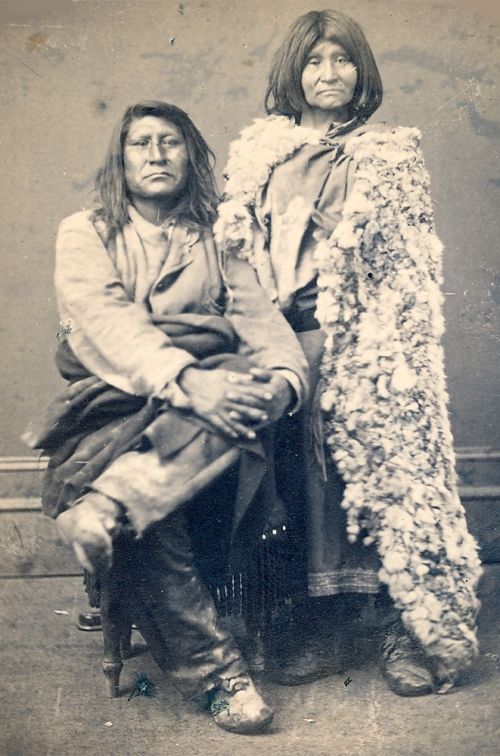|
Sagwitch was born in 1822, a time when his people were
enjoying the last days of the traditional life they had known for
centuries. After the Mormon pioneers entered the Salt Lake Valley in
1847 and as western territories saw more and more exploration and
settlement, the Northwestern Band of Shoshone were forced to forever change their patterns of living. Sagwitch was a wise man and a gifted
speaker, and he fell naturally into the leadership role that he
maintained among his band throughout his life. A survivor of the Bear River Massacre in 1863, Sagwitch believed his people would best survive by assimilating with the Latter-day Saints, who were inhabiting the traditional Shoshone lands. He and his band converted to Mormonism and
attempted to follow their Church leaders' directions in learning to farm
and raise livestock.
Faced with the possible disappearance of his culture and people,
Sagwitch painfully tried, but with only partial success, to help them
adjust and assimilate. Although at times they prospered at farming in
northern Utah and southern Idaho, Sagwitch's people eventually became
"landless Indians" in comparison to the Shoshone Indians who were placed
on reservations in Idaho, Wyoming, and Nevada. Only recently, in 1988,
has the band formally organized themselves into a tribal government and
received federal recognition as a tribal entity. Today's Northwestern
Band of Shoshone, including Sagwitch's descendants, are armed with their
own constitution and are striving to provide housing and other services
for their tribal members on 185 acres of land near
Washakie on the Utah-Idaho border, an area near some of their original hunting and
gathering spots.
|


